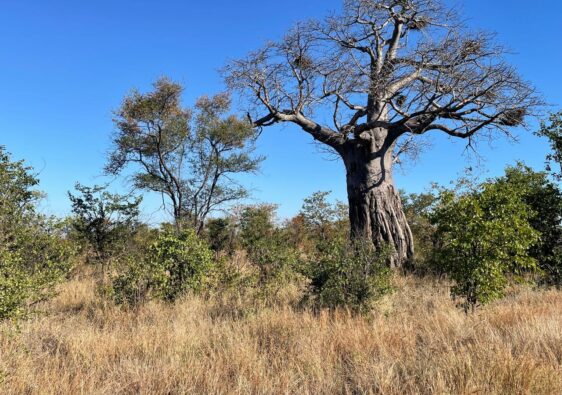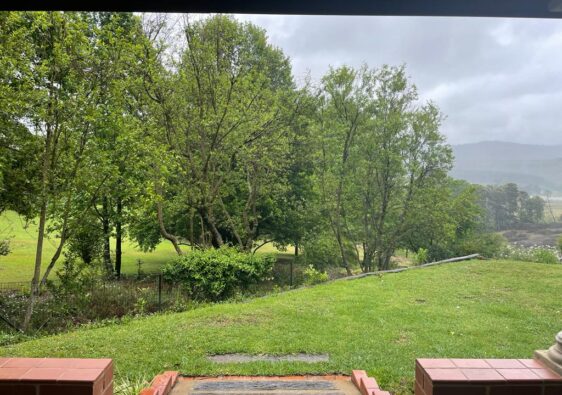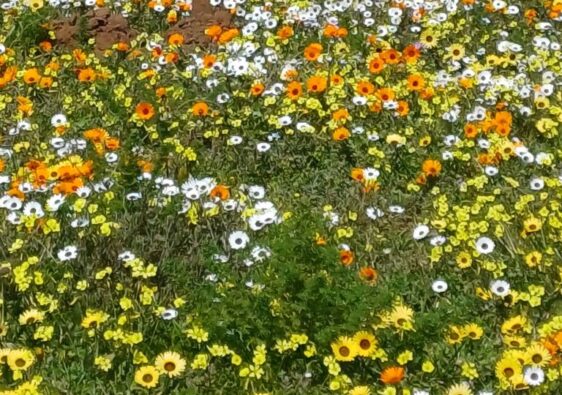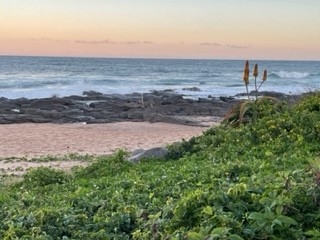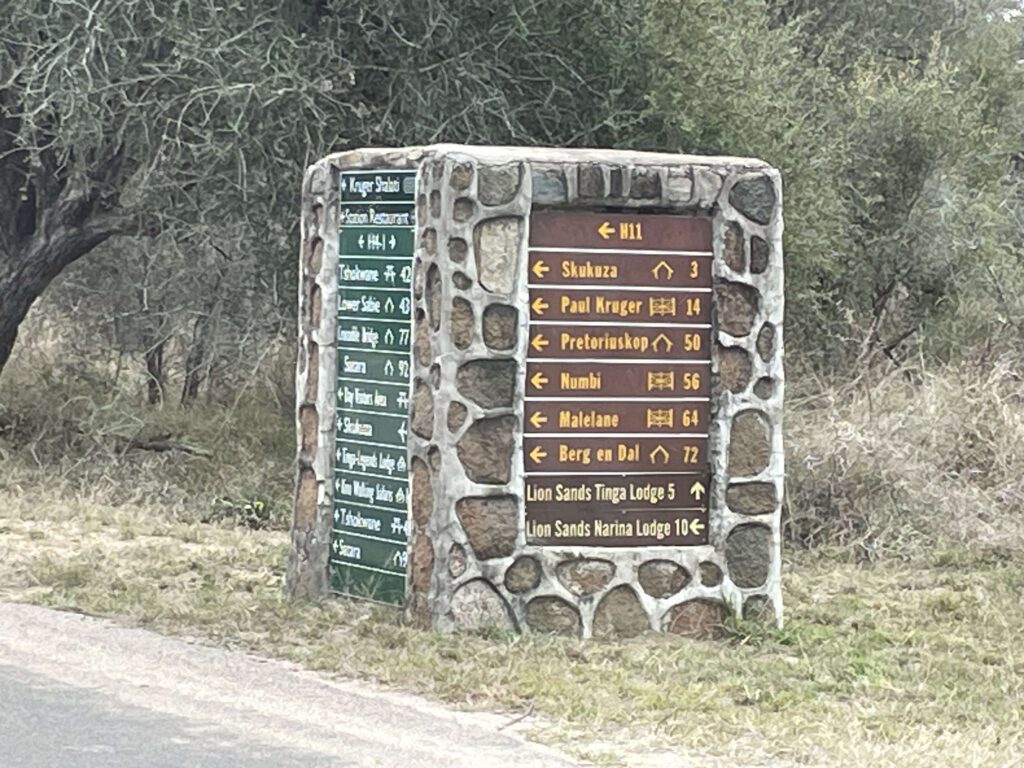
The best place to see leopard in South Africa is in a game reserve. Although leopard can be found outside game reserves throughout South Africa, they are shy animals that try to avoid humans and areas where there is human activity.
Leopard sightings in the Kruger Park (and many other game parks) are not unusual, and that’s one of the best places to go to see leopard.
On our latest trip to Kruger, we had our best ever leopard sighting, and in the most unexpected place!
Usually when we are actively looking for leopard, the best places to go are where there is riverine bush. They seem comfortable in this environment as there is lots of cover, and obviously also lots of other game which they can hunt.
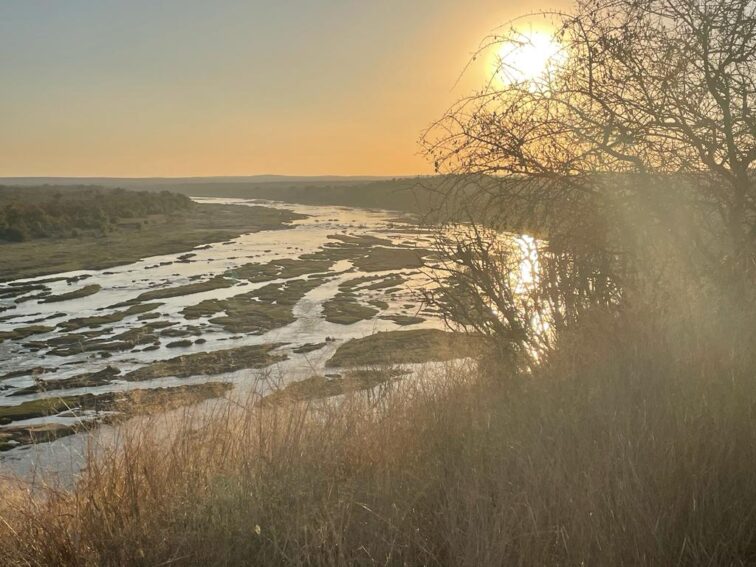
The downside of looking for leopard in these sorts of areas is that, unless you are very lucky, leopard sightings are often fleeting. Our most common leopard sightings in this type of environment usually involve a leopard crossing a dry riverbed.
This is cause for huge excitement and diving for cameras and binoculars, but the leopard is usually only fully visible for a minute or two before it disappears into the bush alongside the riverbank.
So Back to this Leopard Sighting
It was just after lunch, and we were on the main road (H1-4) from Satara heading back towards Olifants Camp with a planned stop on the bridge that crosses the Olifants river to stretch our legs and watch the goings on up and down the river.
We were still some distance from the bridge when we ground to a halt. Because there, sitting next to the road in plain view and seemingly without a care in the world, was a young leopard. No river, no dense bush, no other animals in sight.
We were gob smacked!
At that time of day there were, luckily for us, not too many cars out and about. But there were a few and so several cars stopped to enjoy this rather unexpected sighting.
And then the situation took an interesting turn. Mr. Leopard decided to have some fun with us. So he stood up, and after a yawn and a stretch, wandered across the road into the grass on the verge, then turned around and crawled under the vehicle just in front of us to our right.
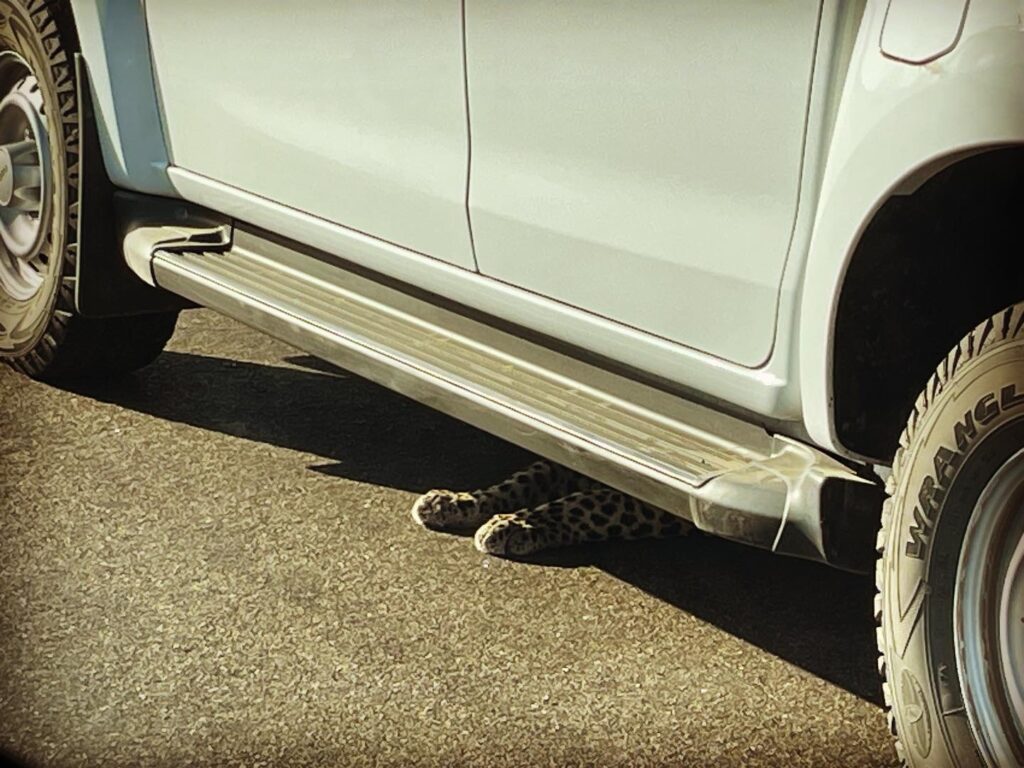
That Was Unexpected!
At this point we could see two paws under the vehicle and it was obvious that the leopard had settled down under the vehicle.
The occupants of the vehicle were from the Netherlands and were both excited and baffled about what to do. We wound a window down and told them not to move and just be patient.
We all sat back and waited to see what would happen next.
A couple of minutes passed and then the paws started creeping forward and after a quick scan up and down the road, the leopard slowly emerged and sauntered down the road in front of our car.
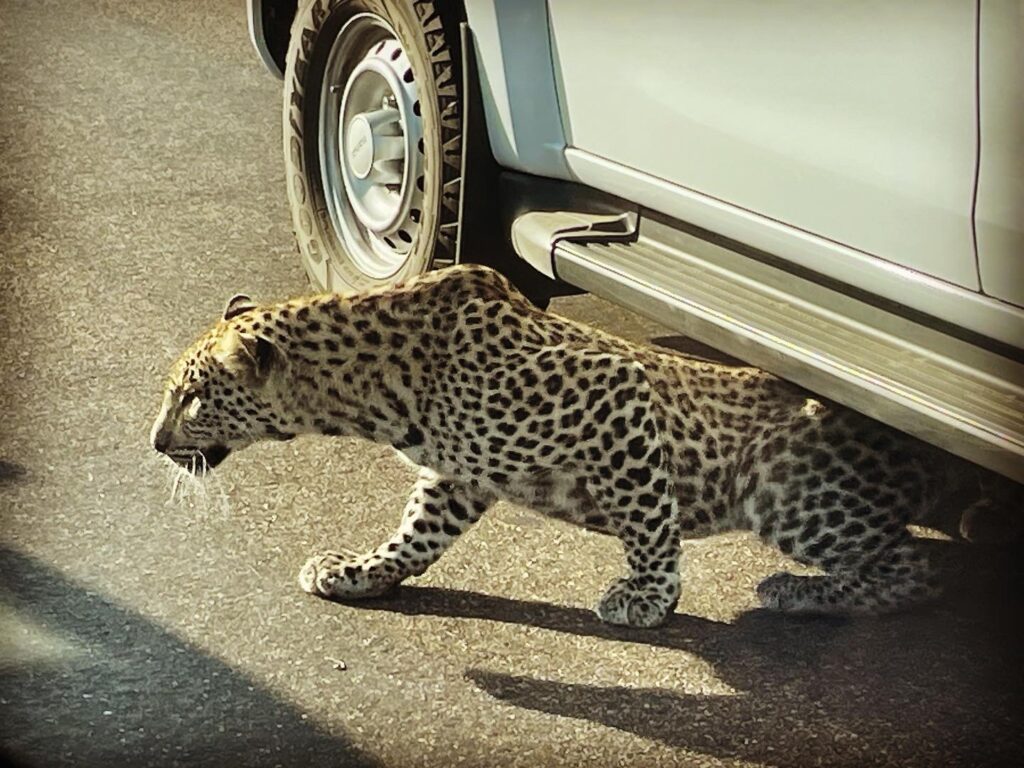
By now a few more cars had gathered, and the leopard went on a parade, weaving casually between them. Windows that had been down rapidly went up as the leopard approached, only to go down again when it had passed by.
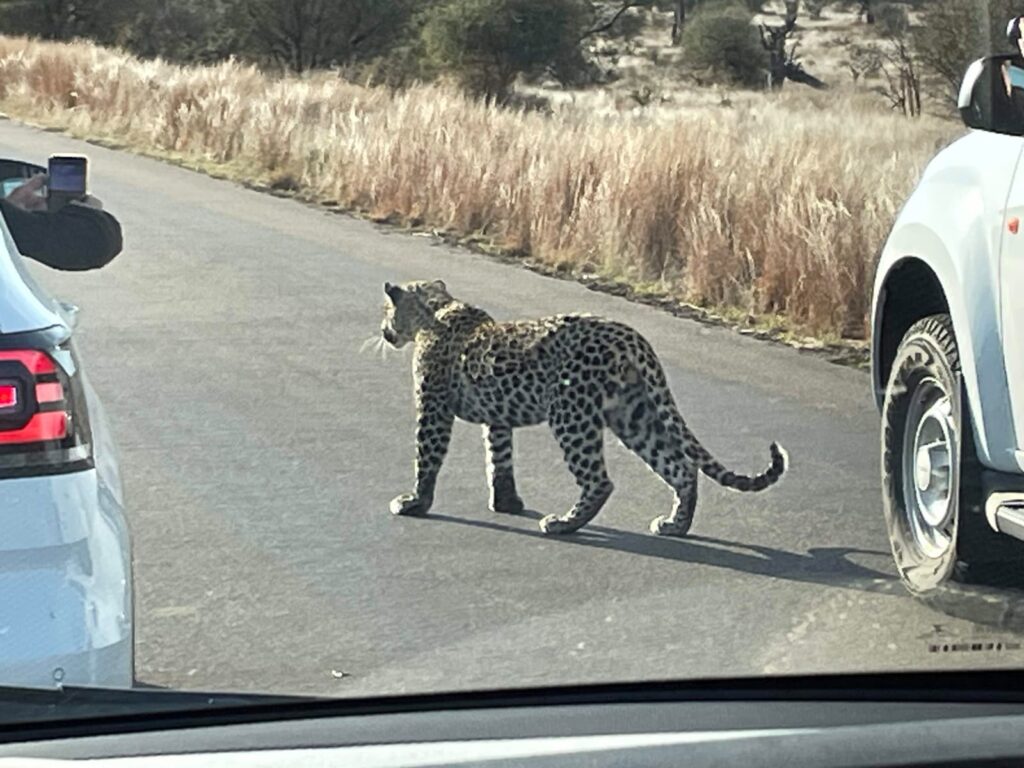
We were all enthralled with this regal display of indifference to the world of humans.
And then when we thought we had seen it all, it strolled up to a stone marker, hopped up onto it and settled down to survey it’s kingdom and loyal subjects.
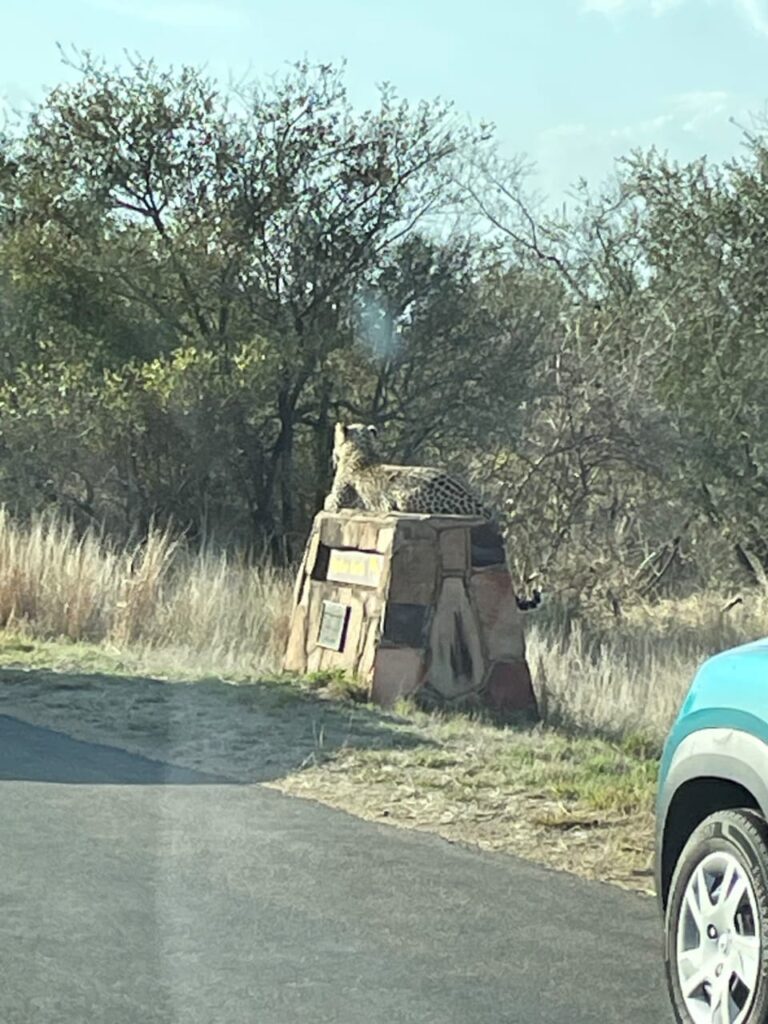
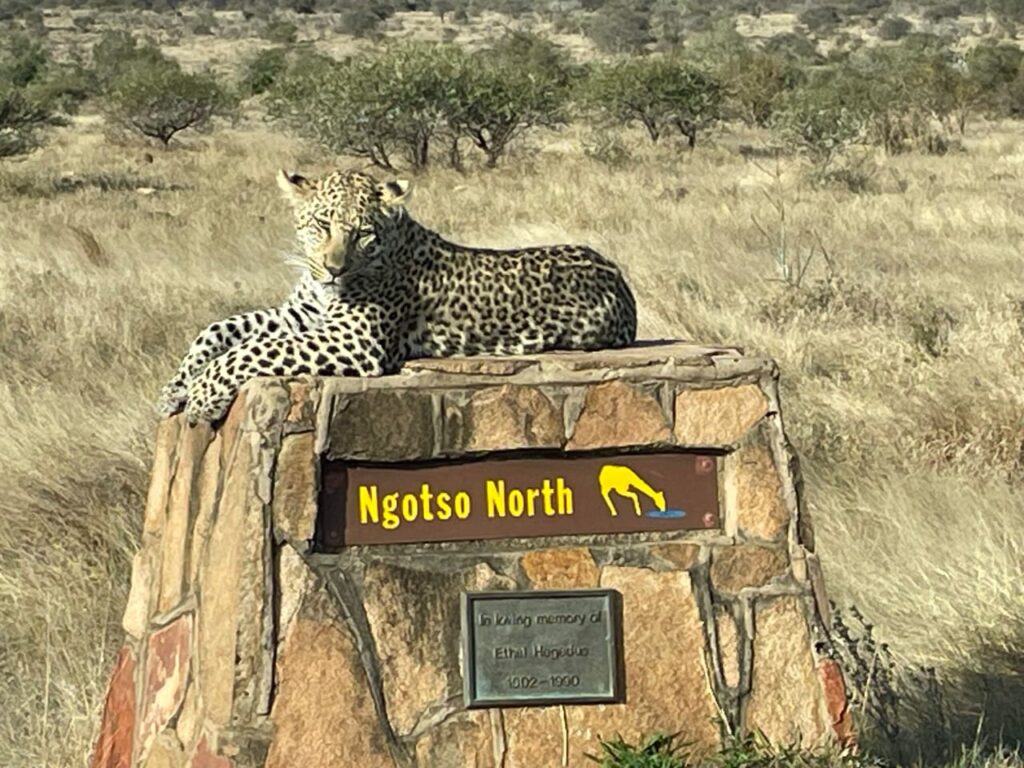
The even more remarkable aspect of this sighting was that we sat (in our car) right next to this leopard for a good few minutes and he didn’t seem at all put out. After having taken a good many pics and admired this awesome creature , we moved off up the road.
For the rest of the afternoon and around the braai fire that evening, all we could talk about was this amazing interaction with a very laid back leopard.
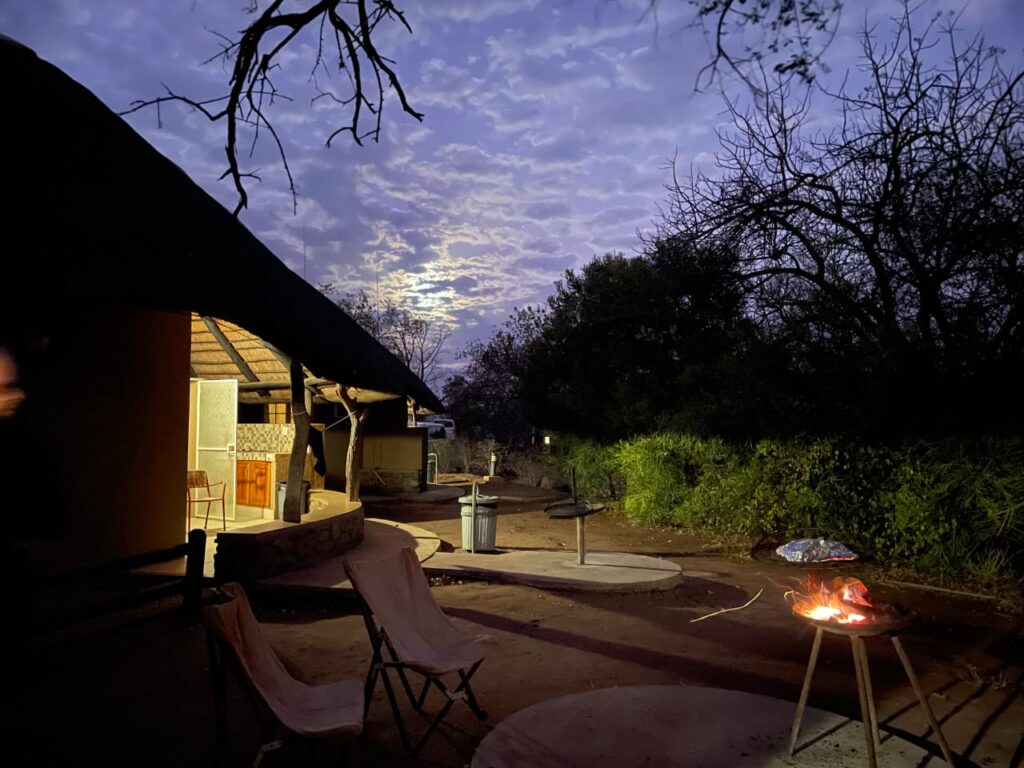
Are Leopards Endangered in South Africa?
While leopard can be found across South Africa both within and outside game reserves, their overall numbers seem to be declining. This is a worrying trend for anyone who is interested in game conservation and protecting wildlife in general. You can read one take on the subject here.
Leopard Sizes Vary Across South Africa
There is quite a variance in the size of adult leopards (male & female) within any given area. The males are generally bigger than the females which is to be expected.
The really interesting aspect however, is the weight difference between leopards in the Western and Northern Cape and those in the more eastern parts of the country.
If we assume the average male leopard in the Kruger Park weighs 60 – 70kg, then his counterpart in the Western Cape probably weighs in at somewhere around 35kg.
In very general terms, the leopards in the Western Cape weigh roughly half of what the leopards in e.g. the Kruger Park weigh!
The reason?
Protein!
While the leopards in the Kruger hunt impala and baboon and warthog and other meaty species, the leopards in the W. Cape have to make do with hares, field mice and the like.
It just confirms the old saying – “you are what you eat!” 🙂
If you enjoyed this glimpse of our world, you can follow more of our travels here
